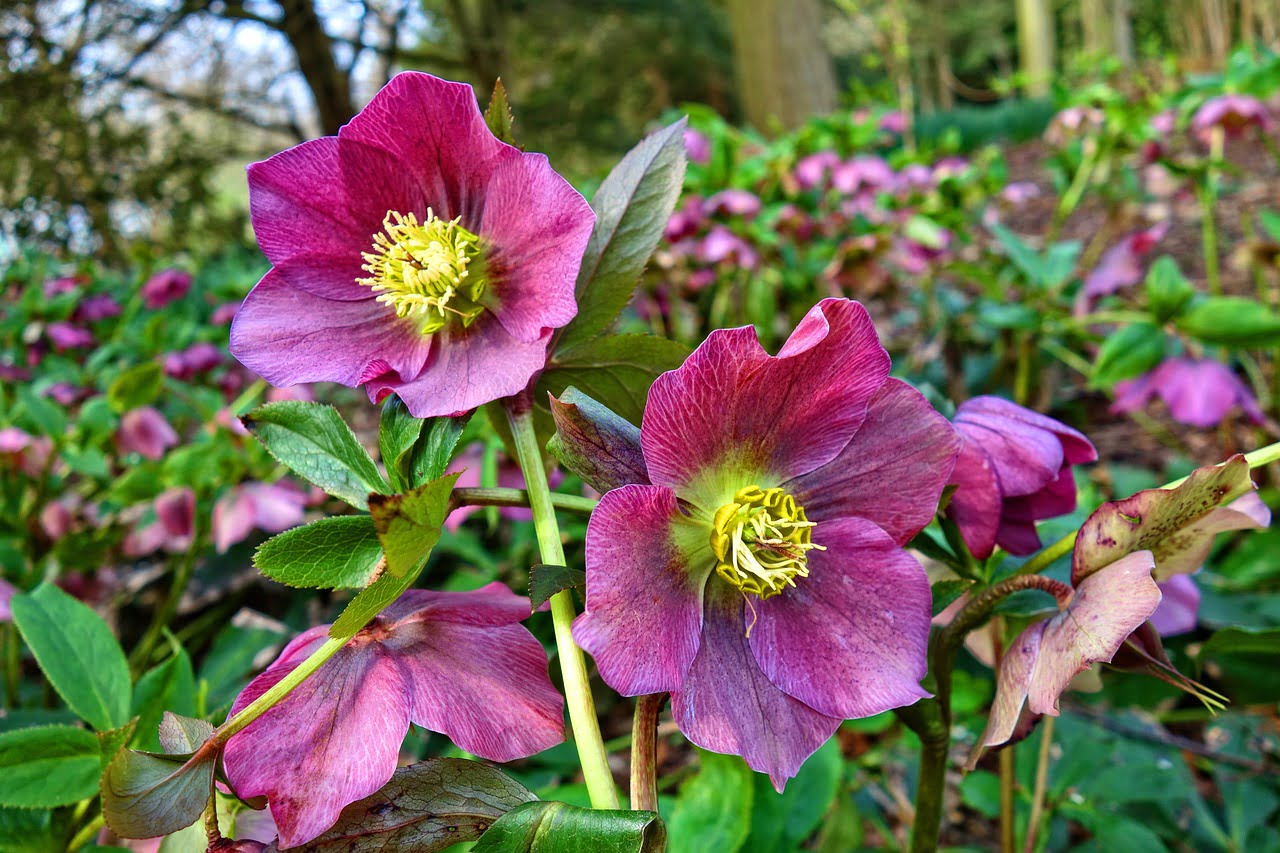
Hellebore planting guide
Introduction
Hellebore, also known as the “Winter Rose” or “Christmas Rose,” is a stunning and resilient perennial plant that blooms in late winter and early spring, adding a touch of color to dreary winter landscapes. This article delves into the enchanting world of hellebore, covering everything from its various species and cultivation techniques to its care and maintenance. Whether you are a seasoned gardener or a novice enthusiast, Hellebore planting guide will equip you with all the knowledge you need to grow and enjoy the beauty of hellebore in your garden.
Table of Contents
Hellebore planting guide
- What is Hellebore?
- Definition and Overview
- History and Symbolism
- Popular Hellebore Species
- Helleborus Niger (Christmas Rose)
- Helleborus Orientalis (Lenten Rose)
- Helleborus Foetidus (Stinking Hellebore)
- Choosing the Right Location
- Light and Shade Requirements
- Soil Conditions
- Preparing the Soil
- Soil Enrichment
- pH Levels
- Planting Hellebore
- Best Time to Plant
- Step-by-Step Planting Guide
- Watering and Feeding
- Watering Tips for Optimal Growth
- Fertilizing Hellebore
- Pruning and Deadheading
- Trimming and Maintenance
- Removing Spent Flowers
- Protecting Against Pests and Diseases
- Common Pests
- Disease Prevention
- Propagation Methods
- Division
- Seed Propagation
- Hellebore in Container Gardens
- Suitable Containers
- Care for Potted Hellebores
- Companion Planting with Hellebore
- Choosing Complementary Plants
- Creating Beautiful Garden Combinations
- Hellebore Arrangements and Bouquets
- Floral Artistry
- Tips for Cut Flower Longevity
- Hellebore in Literature and Art
- Poetic References
- Depictions in Artworks
- Myths and Folklore Surrounding Hellebore
- Legends and Beliefs
- Cultural Significance
- Conclusion
- Recap of Hellebore’s Beauty and Versatility
What is Hellebore?
Hellebore is a genus of flowering plants in the Ranunculaceae family, native to Europe and Asia. It comprises around 20 species, with the most common ones being Helleborus Niger, Helleborus Orientalis, and Helleborus Foetidus. These evergreen perennials are known for their unique ability to bloom during the winter months, making them a cherished addition to cold-season gardens.
Popular Hellebore Species
Helleborus Niger (Christmas Rose)
The Helleborus Niger, commonly known as the Christmas Rose, is one of the earliest hellebore species to bloom, often flowering during the festive season. Its pure white blossoms and dark green leathery leaves add elegance to any winter landscape.
Helleborus Orientalis (Lenten Rose)
The Helleborus Orientalis, or Lenten Rose, is another enchanting species known for its vibrant and diverse flower colors, ranging from soft pastels to deep hues. It typically blooms during the Lenten season, hence the name.
Helleborus Foetidus (Stinking Hellebore)
Contrary to its name, the Helleborus Foetidus is prized for its ornamental value and not for its fragrance. This species features striking lime-green flowers and finely divided foliage, offering a unique visual appeal.
Choosing the Right Location
Hellebores thrive in specific light and shade conditions, and choosing the right location in your garden is crucial for their optimal growth.
Preparing the Soil
Before planting hellebores, it’s essential to prepare the soil to provide the best environment for their development.
Planting Hellebore
Planting hellebores requires careful attention to detail to ensure they establish themselves successfully in their new home.
Watering and Feeding
Proper watering and feeding are essential to keep hellebores healthy and blooming abundantly.
Pruning and Deadheading
Regular pruning and deadheading are necessary to maintain the beauty and longevity of your hellebores.
Protecting Against Pests and Diseases
Hellebores are generally hardy, but they can be susceptible to certain pests and diseases that need to be managed.
Propagation Methods
Learn how to propagate hellebores through division and seed propagation to expand your collection.
Hellebore in Container Gardens
Discover how to grow hellebores in containers and create charming displays on patios and balconies.
Companion Planting with Hellebore
Pairing hellebores with other plants can create stunning garden combinations that complement each other.
Hellebore Arrangements and Bouquets
Explore the world of floral artistry and learn how to create beautiful arrangements and bouquets featuring hellebore blooms.
Hellebore in Literature and Art
Delve into the historical references of hellebore in literature and its portrayal in various artworks throughout time.
Myths and Folklore Surrounding Hellebore
Discover the fascinating myths and folklore associated with hellebore in different cultures around the world.
Conclusion
Hellebores, with their captivating beauty and resilience, are truly extraordinary plants to have in your garden. With proper care and attention, they will reward you with elegant blooms and a touch of enchantment even in the coldest months of the year.
FAQs
- Can hellebores grow in full sun? While hellebores prefer partial shade, some species can tolerate full sun if provided with enough moisture.
- Do hellebores require acidic soil? Hellebores prefer slightly alkaline to neutral soil, but they can adapt to a range of pH levels.
- How often should I water my hellebores? During the growing season, water hellebores regularly, especially in dry spells, to keep the soil consistently moist.
- Can I divide hellebores in the summer? Division is best done in early spring or after flowering in late winter. Summer division may stress the plants.
- Are hellebores toxic to pets? Yes, hellebores contain toxins that can be harmful to pets if ingested. Keep them out of reach of curious animals.